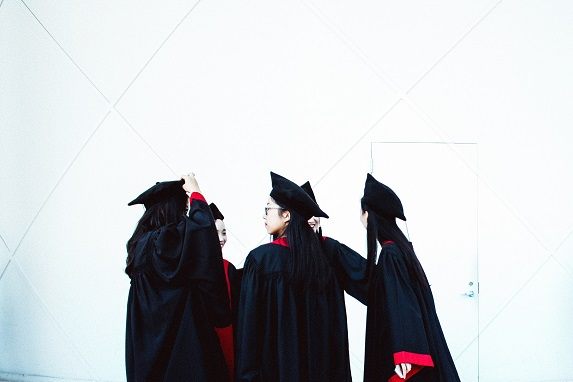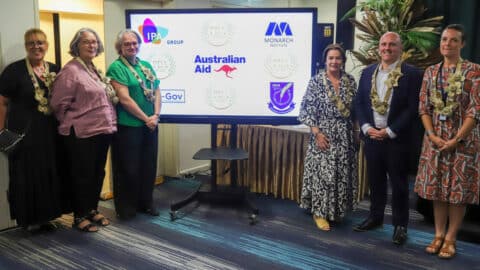Education is the world’s great equaliser. Right now, across the globe we are more educated than we have ever been at any other point in human history and still there are still massive cracks that are allowing millions of people to go by largely uneducated.
- For example in Germany, the United States and Switzerland the average adult (aged over 25) will spend 14.1 – 13.4 years being educated whereas, in Burkina Faso, Niger and Mali those in the same age bracket will have spent on average just 1.5 – 2.3 years being educated in traditional settings. (UNDP, 2018)
- We are also closer than ever before to seeing gender parity in schooling with equal numbers of females and males receiving education in advanced economies and whilst just 82% of women compared to male counterparts are in school in Sub-Saharan Africa, that’s a significant improvement from the 67.36% of women being educated in 1990. (Regional Female to Male Years Schooling, Lee-Lee, Journal of Development Economics 2016)
- Adult education and vocational training is also on the rise with over 60% of adults in Switzerland, New Zealand, the Netherlands, Sweden, Norway and Austria engaging in formal or informal adult education in the last 12 months. (UNESCO, 2018)
Globally we are becoming more and more educated. So, as we stand at the precipice of a new decade and step into the wake of a world recovering from a global pandemic, what can we expect from the changing landscape of global education and what does it all mean for our collective futures?
Like we said, education has the potential to be the world’s biggest equalising force. We equate education with opportunity, we know it opens doors, broadens horizons and allows us to better consider the world outside ourselves. Sadly, once we look past the world of primary education and towards higher and tertiary education we tend to associate education with privilege.
Education is a human right, something we should all have access to and global organisations and NGOs are pushing towards a future where men and women, boys and girls from all over the world have access to free and fair education. There is considerable progress still to make, however, when we’re looking at statistics to measure the state of education across the world, it’s important to remember that there’s no universal measure of what ‘successful’ education looks like. Statistics tend to measure factors like literacy and numeracy rates, class size, access to education, economic indicators and how much the government invests in education are all common and use these metrics to assess the state of a country’s education, but we must acknowledge that the situation in each country is unique and contextually no two countries are truly comparable.
It almost goes without saying but 2020 has been a unique year. The COVID-19 pandemic has changed the way we do almost everything from the way we ride public transport, greet our friends and especially the way we educate.
Over the last several years, with advances in technology, online education has become more and more prevalent. For all intensive purposes, online education has served as a democratising force that has helped to bring tertiary level education to the masses.
This year – 2020 – has forced us all to embrace online education as a necessity rather than a choice. Due to the unique circumstances of the global pandemic, for many individuals online education was the only way people could continue to learn whilst remaining safely socially distanced from one another. The impact that this year will have on overall education trends remains to be seen but it is safe to assume that the education landscape going forward will be indelibly changed after 2020 and that for many of us the shift towards online education might be a permanent one.
In this article we will explore the state of tertiary education both in Australia and throughout the world focusing particularly on tertiary education, vocational educational training (VET) and online VET programs.
Australian Education Statistics
Looking at tertiary education in Australia through the framework of statistical analysis shows a thriving industry that is committed to providing opportunities for learning, growth and success to Australians both young and old. However, in spite of the best intentions of those in charge, traditional education in Australia is also marred by inequality. The average cost of an undergraduate bachelor’s degree in Australia is between $15,000 and $33,000 a year (Studies in Australia), which although far more affordable than an American university education, is still inaccessible to a vast number of Australians. Perhaps because of the cost of traditional university education, higher learning is far more prevalent amongst young Austrialians in cities and urban areas (80%) than it is for their peers in regional and remote areas (less than 75%) (ABS).
Let’s begin by examining the general state of tertiary, vocational and higher education in Australia.
The following statistics illustrate who is currently studying in Australia:
- As of May 2020, 80% of all Australians aged 15 – 64 years were either fully or partially engaged in work and/or study. In concrete terms this means there are 13.2 million Australians, aged between 15 and 64 who are currently studying in Australia. (ABS)
- Breaking this number down further, 18% of men and 20% of women aged 15 – 64 are currently engaged in study. (ABS, May 2020)
- Young people are particularly well represented within this category with most young Australians, aged 15 – 24 years, reportedly doing at least some work or study, or a combination of both. This is 88% of the demographic or 2.8 million people. (ABS, May 2020)
The following statistics refer to the pathways followed by school leavers. This is a vital area to consider as choices made by our school leavers will help us to determine the trends in the tertiary education and VET world for the years to come:
- There were 271,000 people aged 15 to 20 years who were enrolled in secondary school in 2019 but not enrolled in May 2020. Just over four in five of these school leavers (81%) had completed year 12 or equivalent and 60% of these school leavers were currently enrolled in further study at the time of the survey. (ABS, May 2020)
- Of the school leavers who were not studying, 20% were employed full-time, 34% were employed part-time and 48% were not employed in May 2020. However, it is important to note that these statistics were affected by the coronavirus pandemic which was in full swing at the beginning of 2020. (ABS)
- Some school leavers choose to go straight into the workforce by engaging in a trade apprenticeship. In May 2020, there were 192,400 people aged 15 to 64 years who were employed as apprentices or trainees; of the 192,400 people, 85% of them were male. (ABS)
To see the impact of VET and tertiary education on employment, we can examine statistics about who holds qualification in Australia and investigating how their qualifications have impacted their life:
- 68% of Australians aged 20 – 64 had a non-school qualification (a certificate, diploma or degree) and about a third of Australians had a bachelor degree or higher. The statistics are higher when you look solely at women in the same age demographic with 70% of women aged
- 20 – 64 possessing a non-school qualification. (ABS)
- 74% of 15 – 74 year olds with a qualification were employed. (ABS, May 2020)
- When it comes to higher-level qualifications, women continue to outpace men. In May 2019, 33% of women and only 27% of men aged 15-64 had a bachelor degree or higher. (ABS). Human Resources courses were seen to be particularly popular with women.
Australian Vocational Education and Training Statistics
Vocational education and training is a major industry in Australia. The seriousness of the industry is reflected by the $6.1 billion the government spent on VET in 2018 (National Centre for Vocational Education Research). This investment by the government shows that they consider vocational training to be significantly useful to Australians. Of all the Australians turning to non-school qualification and training, the most popular areas of study are society and culture (22.0%) business management and commerce (20.5%) and health (14.9%). (ABS)
The following statistics study the Australian vocational education and training industry and answer the most common questions we have about the world of VET. Starting with, how many Australian students are engaged in VET courses?
- In 2019, there were 4.2 million VET students studying in Australia. (National Centre for Vocational Education Research)
- Of these 4.2 million, 2.1 million students were enrolled in nationally recognised programs and 1.2 million government-funded VET students receiving government fee help.
- With the staggering number of students in VET courses, it’s no surprise that 6.8% of 15 – 64 year olds Australians participated in government-funded VET courses. (National Centre for Vocational Education Research).
To understand the changing landscape of education we must understand the reasons people turn to vocational education.
- Below are the reasons that students said prompted them to enrol in a VET course based on a 2019 survey. (National Centre for Vocational Education Research)
- 30.7% Get a job
- 15.7% Gain extra skills for a current job
- 13.9% Requirement of job
- 11.3% Personal development
- 11% Try for a different career
- 7% Get a better job or promotion
- 6.8% Develop or start own business
With so many people turning to vocational training, it’s clearly working. The following statistics detail the outcomes that graduates of Australian VET training courses experienced after graduating:
- 65.8% of VET graduates improved their employment status after training. (2019, National Centre for Vocational Education Research)
- Of this percentage, 46.8% were unemployed before training and were employed afterwards and 18% were employed at a higher skill level after training than they had been before they enrolled.
- In 2019, 88.1% of graduates were satisfied with the quality of their training which is a 1.3% improvement from the results of the same survey in 2018. (National Centre for Vocational Education Research)
- Employers also report an overwhelming positive view of graduates of the VET system. (National Centre for Vocational Education Research)
- 72.1% of employers were satisfied with vocational qualifications as a job requirement. (2019)
- 77.6% of employers were satisfied with apprentices and trainees. (2019)
- 78.8% of employers were satisfied with graduates of nationally recognised training programs. (2019)
Global Online Education Statistics
In this final section, we will examine online education programs on the world stage before looking at trends and projections for the sector moving forward.
The world is embracing online education in a major way. The following statistics offer an international perspective on trends:
- The United States, India, China, South Korea, United Kingdom, and Côte d’Ivoire have been known to invest most in e-learning. (Dos Santos, 2019)
- Surveys show that 52% of graduate students in the U.S. found their online college-level education to provide a better learning experience than their traditional college-level classroom education. (Duffin, 2019).
Because of the increased interest in online education, the economic projections for the sector are remarkably positive. The statistics are as follows:
- Overall, online courses make up $46 billion of the e-learning market. (Statista)
- Even before the pandemic mandated a shift to online learning, the global e-learning market was already seeing massive annual global growth. It was expected to reach $336.98 billion by 2026, at a compound annual growth rate of 9.1% from 2018 to 2026. (Syngene Research, 2019)
- Similarly, the impact of the return to normal education following the pandemic must be considered. It is predicted that the pandemic’s aftermath will cause a six-month to five-year disruption (Dennis, 2020) and that there will also be a 15% to 25% decline in enrollment. (Dennis, 2020)
As a global community, we are more educated than ever before and, with higher levels of education, comes the possibility of reaching a state of equality amongst people from all walks of life, all different backgrounds and from all the corners of the globe. The shift towards online education will hopefully facilitate more learning opportunities for those in regional and remote areas. The positive results seen from vocational education and training programs will also be undoubtedly successful in giving second chances to those who missed out on receiving traditional education or who chose to follow a non-traditional educational pathway.
Education leads to opportunities and, the way things are going, I think we can safely say that the future looks bright.
Keen to chat about your future course options? Give Monarch a call on 1300 938 755 today.





